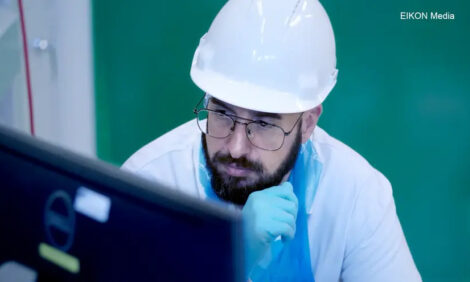



AASV: Rethinking methane
In a 2006 report, the Food and Agriculture Organization of the United Nations claimed meat production was responsible for 18 percent of global greenhouse gas emissions, an amount that’s more than total global transportation emissions.Part of Series:
< Previous Article in Series Next Article in Series >
Three years later, University of California-Davis professor Frank Mitloehner challenged that claim, saying livestock’s role in greenhouse gas emissions had been overstated. He explained his findings at the American Association of Swine Veterinarians (AASV) conference, held virtually this year.
Understanding greenhouse gas emissions

Livestock production has taken much of the blame when it comes to greenhouse gas emissions, but Mitloehner says this reputation is unfair, explaining how greenhouse gases work. Greenhouse gases – carbon dioxide, methane and nitrous oxide – are produced both naturally and by human activity, he said. The gases form a blanket over the atmosphere, and that blanket prevents solar radiation from going back into space.
“Without these greenhouse gases, life on earth wouldn’t be possible,” said Mitloehner. “The problem, however, is that we have too many of these greenhouse gases forming a blanket that’s now too thick.”
Human activities, such as driving a car or eating a burger, create different amounts of greenhouse gases. Experts use a calculation known as the Global Warming Potential (GWP) to better understand how these activities compare to one another in terms of their carbon footprint. It is best described as the ability to trap extra heat in the atmosphere over time relative to carbon dioxide. It is most often calculated over 100 years and known as the 100-year GWP.
Methane is 28 times more potent than CO2. While it’s a very important heat trapping gas, it’s also unique in that it is destroyed almost as quickly as it is produced. Globally, human activity produces 560 teragrams of methane each year. But chemical reactions in the atmosphere naturally destroy a staggering 550 teragrams per year. Furthermore, the life span of methane is just 10 years. Carbon dioxide, on the other hand, stays in the atmosphere for 1,000 years.
“Most often when we hear methane discussed in the media, for example, we hear only about emissions,” said Mitloehner. “What we generally don’t hear about is that methane is not just produced, but also destroyed.”

While methane has stronger heat trapping capabilities than CO2, after 10 years methane is converted back into atmospheric CO2, which is used by plants during photosynthesis. Some of the carbon taken in by plants remains in aboveground material, such as pasture grasses. Below the ground in roots and soil carbon is stored through soil carbon sequestration.
“Make no mistake, the soil is hugely important in the overall carbon picture,” said Mitloehner. “Soils have the capacity of locking away a third of all human-caused carbon.”
Differences between methane and CO2
There are important differences between methane and CO2. The latter is a stock gas, which means it’s cumulative. Every time we burn carbon, we add to the existing stock, and that stock stays in the atmosphere for 1,000 years.
Methane is often treated like a stock gas when it is not. Methane is a flow gas, which means it is destroyed at almost the same rate it is produced.
“As long as your herds are constant in size, these constant herds do not add new additional methane,” said Mitloehner.
Mitloehner isn’t the only person to question why regulatory bodies treat methane as a stock gas; Myles Allen and his colleague at the University of Oxford have raised similar concerns. Since the atmospheric lifetime and radiative impacts of different climate pollutants differ considerably, they believe the 100-Year Global Warming Potential (GWP100) is misleading. A better approach, they say, is to “report emissions as 'warming-equivalents' that result in similar warming impacts without requiring a like-for-like weighting per emission.” The GWP100, they say, falls short in many scenarios, pointing to methane emission, which are mostly stable or declining. Instead, they propose a new matrix called GWP*, which takes into consideration the rate of change of methane over time.
If herds remain stable or decrease slightly, then methane production is reduced. Methane can also be captured and used as energy through the use of digesters, further lowering overall emissions.
“If we were to reduce methane by 35 percent, it would lead to a strong negative warming, and that means strong cooling impact,” said Mitloehner. “That is really a cool change of the narrative around livestock.”
In fact, if the world is able to reach Net-Zero CO2 production and global warming plateaus, then methane reductions could play an important role in negative warming.
Shrinking herd size is not the only way to lower emissions, though, said Mitloehner, pointing to biogas production as a possible solution. In California, for instance, large dairies are transitioning to covered lagoons that trap methane. The methane is converted to renewable natural gas and then sold into the vehicle fuel market for low carbon fuel standard credits. California’s dairy and livestock sector, as a result, has reduced greenhouse gas emissions by 2.2 million metric tons so far, said Mitloehner.
“This gets me really excited,” he said. “Why? Because our farmers have not just understood that they contribute to this whole climate issue, they have understood that it’s important for them to quantify their contributions, and most importantly, that they can make a difference by reducing it.”











